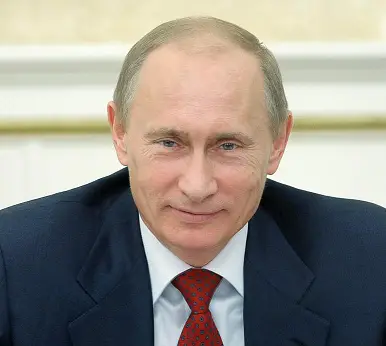Just before Russian President Putin’s arrival in Tehran last week, Russian state energy giant Gazprom inked a US$40 billion memorandum of understanding with the National Iranian Oil Company (NIOC) as part of a broadening of cooperative ties between the two nations.
Among the understandings reached, Gazprom pledged to aid NIOC in developing the US$10 billion Kish and North Pars gas fields, with a view to increasing production to more than 10 million cubic meters of gas per day. The two companies also agreed on a US$15 billion project to increase gas pressure in the supergiant South Pars gas field on the border between Iran and Qatar. Gazprom also pledged to assist in the construction of various liquified natural gas projects and gas-export pipelines.
These agreements will give the Kremlin even more control over gas supplies heading to Europe in the future. Previously these gas products might have traveled into southern Europe to be shipped north. There they could have helped alleviate shortages like the current one produced by the restriction of Russian natural gas products, due to pipeline maintenance issues and payment disagreements, all seemingly related to the conflict in Ukraine.
Also, by becoming involved in the South Pars field, Russia is now positioned to disrupt LNG supplies shipped into Qatar for processing and export, which are heading to Europe. Covering 3700 square kilometers, the South Pars field is the world’s largest gas reservoir, holding at least 1,800 trillion cubic feet of gas and at least 50 billion barrels of natural gas condensates.
Gazprom’s increasing involvement in Iranian LNG supplies comes at the exact moment when Europe is increasingly desperate for LNG imports to try and mediate the damage being done by Russia’s restriction of gas shipments. Meanwhile as Europe undergoes an energy crunch, inflation across the European Union averages 8.6%, and economic growth has petered to 0.6% quarterly, in the first quarter of this year. Despite its anemic growth rate, inflation has forced the European Central Bank to raise rates across the union for the first time in 11 years, which undoubtedly will crush any economic growth even further.
On the other side, analyses show Russia earning even more from energy exports now than it was earning before the invasion of Ukraine, the ruble is at an eight year high, and Russia’s gas exports account for only 2% of Russia’s GDP, meaning they can cut off the gas supply to Europe entirely, if they wanted, with minimal economic effect.
As a result, examining this new deal from a Western perspective is like watching a slow motion car crash, where the car crashing is Western geopolitical position, and the person setting off the crash is a smiling President Vladimir Putin.


